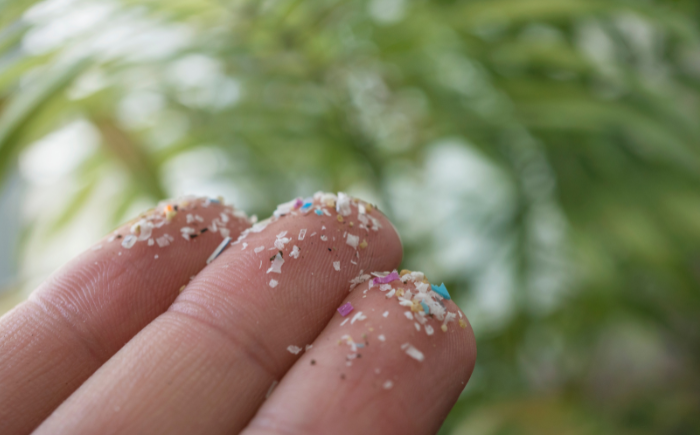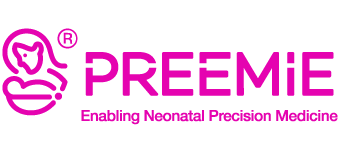Microplastics and Pregnancy: A Growing Concern

Plastic pollution is a known global environmental crisis. But nowadays, people are focusing their concerns on microplastics, particles less than five millimetres in size, infiltrating every corner of our planet. These tiny fragments can be found in our oceans, soil, air, and even our food and water. While the impact of microplastics on human health is still being investigated, recent studies have raised concerns about their potential effects on pregnant women and their unborn babies.
How Do Microplastics Enter the Body?
Humans can be exposed to microplastics through various routes, including ingestion, inhalation, and dermal contact. Ingestion is the most common pathway, with microplastics often found in food, water, and dust. Inhalation occurs through breathing in microplastic-contaminated air, primarily indoors. Dermal contact is also possible, particularly in areas with abundant microplastics, such as near beaches or construction sites.
Pregnant women are particularly vulnerable to microplastic exposure due to their physiological changes and increased contact with environmental sources. One of the most alarming findings is the presence of microplastics in the placenta, the organ that connects the mother to the fetus and provides essential nutrients and oxygen. Studies have detected microplastics in the placentas of women worldwide, raising concerns about the potential risks to the developing baby.
Potential Health Effects
The potential health effects of microplastics on pregnant women and their unborn babies are still being elucidated. However, several concerns have been raised, including:
- Exposure to microplastics during pregnancy could increase the risk of adverse birth outcomes, such as premature birth, low birth weight, and birth defects.
- Microplastics could carry harmful chemicals that can disrupt the development of the fetus’s immune, nervous, and reproductive systems.
- Microplastics could contribute to inflammation and oxidative stress, which can have negative consequences for fetal development.
The same applies to the effects of microplastics on premature babies. While researchers are still trying to gather information to reach a valid conclusion, several potential concerns have emerged:
- Immune System Disruption: Microplastics can carry harmful chemicals that can suppress the immune system, making premature babies more susceptible to infections.
- Respiratory Issues: Inhalation of microplastics may trigger respiratory problems, such as asthma and allergies.
- Neurological Development: Microplastics can disrupt brain development, leading to cognitive impairments and behavioural problems.
- Growth and Development: Exposure to microplastics may hinder growth and development, particularly in premature babies who are already developmentally at risk.
- Preterm Birth: Some studies suggest a link between microplastic exposure and increased risk of preterm birth.
Minimise Exposure to Microplastics
While more research is needed to fully understand the impact of microplastics on premature babies, some steps can be taken to minimise exposure:
- Breastfeeding: Breastfeeding is the preferred method of feeding for premature babies, as it provides essential nutrients while minimizing the risk of microplastic contamination.
- Hygiene Practices: Strict hand washing by caregivers and minimizing exposure to dust and contaminated surfaces can help reduce microplastic exposure.
- Environmental Measures: Reducing plastic waste in the home and community can help overall exposure levels.
- Education and Awareness: Raising awareness among healthcare providers and parents about microplastic pollution is crucial for informed decision-making.
- Limit consumption of processed foods and bottled water, as these are more likely to contain microplastics.
- Stay informed about microplastic pollution and advocate for policies that reduce plastic waste.
The presence of microplastics in the placenta is a significant concern that warrants further investigation. Pregnant women should be aware of the potential risks and take steps to minimize their exposure. By working together to reduce plastic pollution, we can protect the health of mothers and their babies for generations to come.
In conclusion, the infiltration of microplastics into various aspects of our environment has emerged as a critical concern, particularly for pregnant women and their unborn babies. The pathways through which microplastics enter the human body, coupled with the vulnerability of pregnant women to exposure, have raised alarms about potential health effects.
While the precise impact of microplastics on pregnancy is still under investigation, studies have identified the presence of these tiny particles in the placenta, emphasizing the urgent need for further research. Concerns include the potential for adverse birth outcomes, disruptions to fetal development, and the possibility of long-term health consequences for both mothers and their babies.
Addressing this issue requires a multi-faceted approach, encompassing personal lifestyle choices, healthcare practices, and broader environmental measures. From adopting breastfeeding as a preferred method for premature babies to advocating for reduced plastic waste and raising awareness among healthcare providers and the general public, collective efforts are crucial in minimizing the risks associated with microplastic exposure.
As we navigate the intricate landscape of microplastic pollution, staying informed and actively participating in efforts to reduce plastic waste becomes paramount. By taking these steps, we can contribute to safeguarding the health of current and future generations, ensuring a healthier, plastic-free environment for mothers and their babies alike.
REFERENCES
Microplastics in placentas: occurrence, sources, and effects: https://www.ncbi.nlm.nih.gov/pmc/articles/PMC9517680/
Rise of microplastics discovered in placentas of Hawaiʻi mothers: https://www.hawaii.edu/news/2023/11/29/rise-of-microplastics-in-placentas/
Microplastics exposure: implications for human fertility, pregnancy and child health: https://www.frontiersin.org/articles/10.3389/fendo.2023.1330396
Plasticenta: First evidence of microplastics in human placenta: https://pubmed.ncbi.nlm.nih.gov/36141864/
Microplastics revealed in the placentas of unborn babies: https://www.theguardian.com/environment/2020/dec/22/microplastics-revealed-in-placentas-unborn-babies

